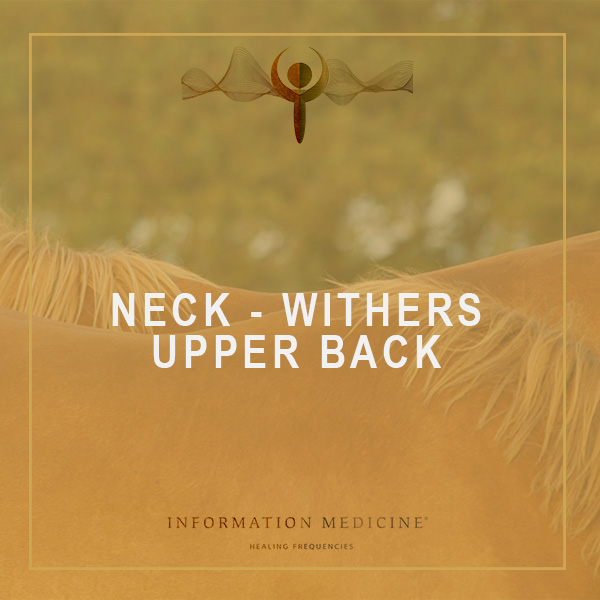This sound file contains the balancing frequencies that relate to all parts of the neck, the withers, (cervical and thoracic spine) and the upper back, the associated functions and parts involved (muscles, tendons, ligaments, vertebrae, joints bones, etc.), emotions, chakras, meridians, possible disorders (including kissing spines, blockages, osteoarthritis, spondylosis) and symptoms (pain, stiffness, cramp, etc.).
Physical layer: Dogs can develop neck problems due to a neck hernia or trauma, but also due to a collar when a dog pulls a lot on the leash or the owner jerks the leash when the dog does not listen. A tug on the leash can result in whiplash-like complaints in a dog. Jumping off something (the couch) or jumping out of something (the car) can also unintentionally lead to complaints of the neck or shoulders. A cat can of course also suffer trauma to the neck or back or, for example, get a hernia.
Pain in the neck, withers and upper back are two different complaints that can be related. This is because the cervical and thoracic spine are in direct connection with eachother. Muscles are also connected, such as the cervical and thoracic part of the m. Trapezius that runs from the neck to the withers or the m. longissimus which runs from the withers over the back. Through these connections, pain in e.g. the cervical spine can radiate to the thoracic spine. Complaints can arise particularly at the transitions, in this case in the Cervicothoracic junction (CTJ) that lies behind the shoulder blade.
A CTJ blockage can cause various complaints, such as problems with moving the shoulders and front legs, but airway problems can also be caused by a CTJ blockade. In horses, problems in the CTJ area can also originate from the SI joint. Often this manifests itself in diagonal irregularity/lameness over the diagonal right rear and left front.
Kissing spines is another condition that can cause problems in the upper back. The thorn-shaped protrusions of the vertebrae in the back grow together because the protrusions touch each other (hence the term ‘kissing’), which causes damage and irritation of the periosteum. This is very painful. Eventually, bone grows where the protrusions meet. As a result, they can grow together. With a deformity, the back becomes very stiff, but often less painful.
Energetic layer: in traditional Eastern medicine, the neck and upper back area is energetically connected with the meridian system and especially with the lung energy (neck/shoulders/chest area), kidney energy (bones and joints), gallbladder energy (including tendons and ligaments) and the elements metal and wood.
This sound file can be combined well with, for example, the sound files Shoulder, Headache, Pain, Regeneration or Inner balance. There is a separate sound file for the entire spine.
